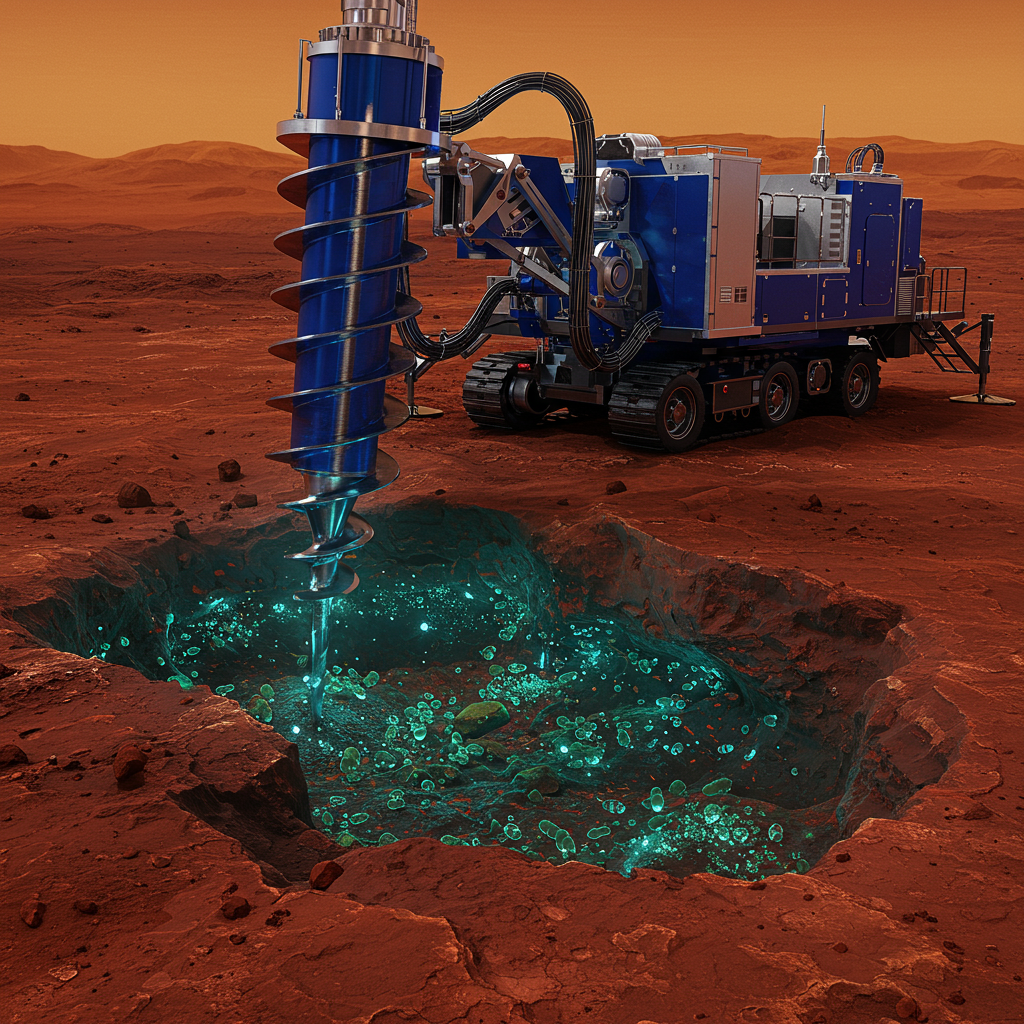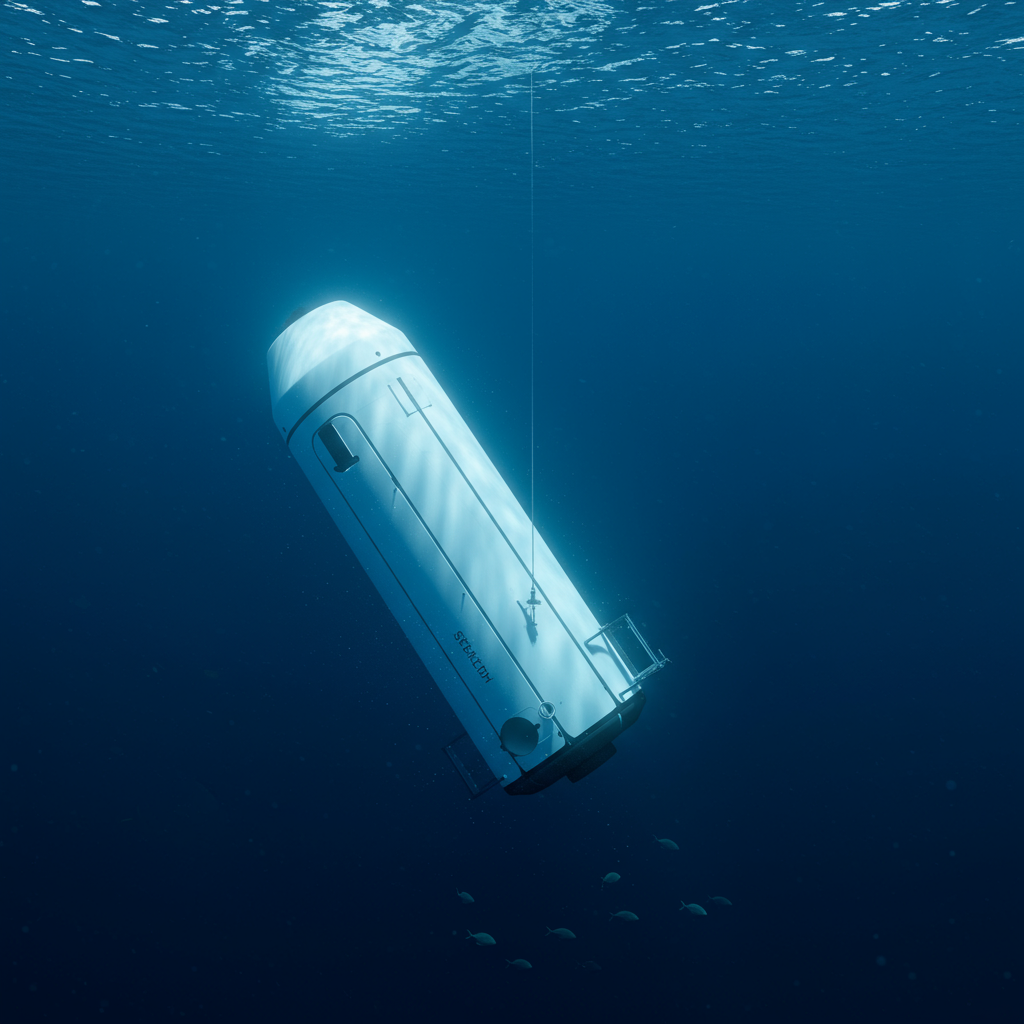The tantalizing prospect of discovering life beyond Earth continues to captivate humanity. Recent scientific discussions have reignited hope regarding ancient microbial life on Mars, sparking a crucial debate: if life once thrived on the Red Planet, could it still persist today, hidden deep beneath its desolate surface? This compelling question suggests that our unwavering pursuit for Martian life should focus on the planet’s vast, unexplored subsurface environments, echoing Earth’s own extremophile success stories.
The Enduring Question: Could Life on Mars Still Exist?
For decades, space agencies and astrobiologists have meticulously probed Mars, seeking answers to its biological past and present. The potential detection of ancient biosignatures, like organic molecules or unique geological formations, has provided compelling glimpses into a warmer, wetter early Mars – a period when conditions might have supported nascent life. This tantalizing evidence fuels the conviction among some experts that the Red Planet’s biological narrative might not have concluded with its atmospheric loss and cooling, but merely shifted to a deeper, more protected chapter.
Echoes of Ancient Mars: Evidence and Hypotheses
Early Mars was a vastly different world from the arid, radiation-scorched landscape we observe today. Geological records indicate the presence of extensive liquid water, possibly oceans, lakes, and rivers, for billions of years. This prolonged period of potentially habitable conditions is a critical factor for the emergence and evolution of life. Missions like NASA’s Curiosity and Perseverance rovers have found significant evidence of this ancient aqueous past, uncovering mineral veins formed by water interaction, sedimentary rock layers indicative of ancient lake beds, and organic molecules preserved within Martian soil. These discoveries collectively suggest that Mars once possessed the fundamental ingredients necessary for life, prompting the profound question of whether life actually took root during this favorable era.
Earth’s Extremophiles: A Blueprint for Martian Survival
To understand how life might endure on Mars, we often look to Earth’s most resilient inhabitants: extremophiles. These remarkable organisms thrive in environments once thought to be utterly uninhabitable, offering powerful analogs for potential Martian life. Deep underground, kilometers beneath the surface, microbes flourish without sunlight or oxygen, sustained by chemosynthesis—extracting energy from chemical reactions. Examples include bacteria found in deep-sea hydrothermal vents, powered by geothermal energy, or those living within solid rock, metabolizing iron or sulfur compounds. These terrestrial extremophiles demonstrate life’s incredible adaptability and its capacity to colonize niches isolated from surface conditions, hinting at similar possibilities within the Martian crust. Such findings reinforce the idea that life, once established, is remarkably tenacious.
Martian Subsurface: A Potential Refuge for Life
Given the harsh radiation, extreme cold, and thin atmosphere on the Martian surface today, any extant life on Mars would almost certainly need to be shielded. The subsurface offers a natural sanctuary, providing protection from cosmic radiation and solar flares. It could also harbor pockets of liquid water, insulated by overlying rock and warmed by geothermal activity, creating stable microhabitats. The hypothesis that life migrated underground as Mars’s surface conditions deteriorated aligns perfectly with the survival strategies observed in Earth’s extremophiles.
Adapting to the Red Planet’s Harshness
If life did emerge on early Mars, its survival would necessitate a profound evolutionary journey. As the planet’s atmosphere thinned and temperatures plummeted, surface water would have evaporated or frozen. Life forms would gradually adapt, migrating deeper into the crust where geothermal heat, subterranean aquifers, or brine pockets offered more stable, protected environments. This process would involve evolving metabolic pathways to utilize available chemical energy sources, similar to terrestrial lithoautotrophs. Over billions of years, these Martian organisms could have become highly specialized extremophiles, perfectly suited to the unique conditions of the deep Martian subsurface. This deep underground adaptation offers a compelling narrative for the persistence of Martian life.
The Search Continues: Missions Targeting Subsurface Biosignatures
Modern Mars exploration strategies increasingly prioritize investigating these subterranean possibilities. Future missions are being designed with advanced drilling capabilities, ground-penetrating radar, and sophisticated instruments capable of detecting biosignatures within subsurface samples. For instance, the ExoMars Rosalind Franklin rover, while facing delays, is designed to drill up to two meters deep, specifically targeting ancient environments where organic matter might be preserved from radiation. Furthermore, proposals for deeper drilling missions, or even robotic burrowing probes, are gaining traction, reflecting the scientific community’s growing conviction that the greatest potential for discovering extant life on Mars lies beneath the surface, possibly within ancient seabeds or protected hydrological systems.
Why Continued Exploration Matters for Astrobiology
The quest for life beyond Earth is not merely a scientific endeavor; it is a profound philosophical journey that reshapes our understanding of life’s origins and prevalence in the universe. Discovering either ancient or extant life on Mars would be a monumental achievement, providing invaluable insights into astrobiology and planetology. It would inform our understanding of planetary habitability, the conditions under which life can arise, and how it can adapt to extreme environmental changes.
Beyond Microbes: The Broader Implications of Discovery
Finding even microbial life on Mars would fundamentally alter our cosmic perspective. It would suggest that life is not an exclusive phenomenon of Earth but potentially a common occurrence across the universe, given suitable conditions. Such a discovery would also have significant implications for future human missions to Mars, demanding careful consideration of planetary protection protocols to avoid contaminating potential indigenous life forms. The implications extend to astrobiology, evolution, and even our place in the cosmos.
Challenges and the Path Forward
Despite the compelling rationale for subsurface exploration, significant technical and financial challenges remain. Drilling deep into the Martian crust requires robust, autonomous technology capable of operating in extreme conditions. The risk of contamination, both terrestrial microbes polluting Mars and potential Martian life being brought back to Earth, necessitates stringent planetary protection measures. However, the scientific payoff of discovering genuine Martian life is immeasurable. International collaboration and sustained investment in advanced robotics and analytical instrumentation are critical for overcoming these hurdles and unlocking the secrets held within Mars’s deep geological layers. This continuous exploration represents humanity’s commitment to understanding one of the most fundamental questions: are we alone?
Frequently Asked Questions
What signs of ancient life have scientists potentially found on Mars?
Scientists have uncovered several compelling indications of ancient Martian life. Evidence includes the detection of organic molecules, which are the building blocks of life, within sedimentary rocks by NASA’s Curiosity rover in Gale Crater. Additionally, mineral formations, such as hydrated silica, suggest past interactions with water and potentially biological processes. The presence of ancient lake beds, river channels, and floodplains, observed through orbital imaging and rover missions, indicates long periods of liquid water on the surface, a primary prerequisite for life. While none of these findings definitively prove life existed, they collectively point to a past habitable environment on Mars.
How do Earth’s extremophiles provide clues for life existing on Mars?
Earth’s extremophiles are organisms that thrive in environments once thought to be too harsh for life, offering crucial analogies for potential Martian life. Examples include bacteria living deep underground in solid rock, organisms at hydrothermal vents without sunlight, or microbes adapted to extreme salinity or acidity. These organisms demonstrate that life can persist by using chemosynthesis (deriving energy from chemical reactions) instead of photosynthesis. Such capabilities suggest that if life ever arose on Mars, it could have adapted to the planet’s changing conditions by migrating to protected subsurface environments, utilizing available chemical resources, much like Earth’s resilient extremophiles.
What are the biggest challenges in searching for subsurface life on Mars?
Searching for subsurface life on Mars presents numerous significant challenges. Foremost among these is the technical difficulty of drilling deep enough into the Martian crust to reach potential habitable zones, which could be several meters or even kilometers below the surface. This requires highly specialized, robust, and autonomous drilling technology capable of operating in extreme temperatures and radiation. Additionally, strict planetary protection protocols are essential to prevent terrestrial microbes from contaminating potential Martian biosignatures. The cost of developing and deploying such advanced missions is also substantial, necessitating significant international investment and collaboration.
Conclusion: The Unwavering Pursuit of Martian Life
The prospect that life on Mars might persist beneath its current, hostile surface represents one of the most thrilling hypotheses in modern astrobiology. Drawing parallels with Earth’s tenacious extremophiles, the argument for continued deep subsurface exploration is compelling. While scientific missions have already yielded incredible insights into Mars’s ancient, potentially habitable past, the true potential for discovering extant life likely lies beyond our current reach, protected within the planet’s geological embrace. The journey to uncover these secrets will be long and arduous, demanding innovation, perseverance, and global cooperation. Yet, the profound implications of finding life on another world make this unwavering pursuit not just a scientific endeavor, but a fundamental quest for humanity’s place in the universe.




